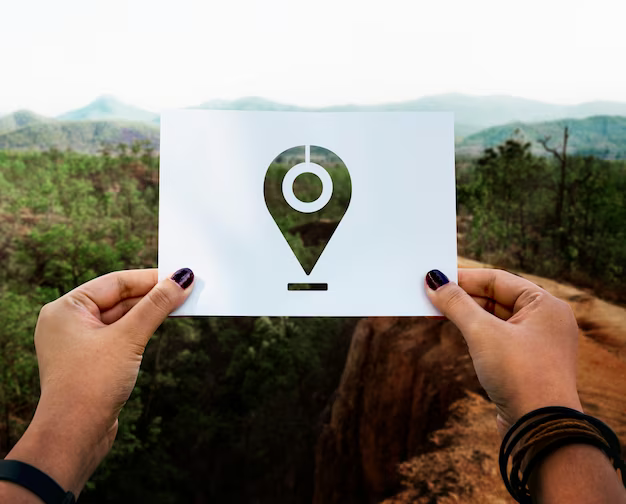In the digital age, geotagging has become an increasingly popular way to add location information to photos and videos. Geotagging can be used to document where a photo was taken, share location information with friends and family, or even help improve the accuracy of search results. There are two main ways to add geotags to photos: With a GPS-enabled camera and with a smartphone.
Is Geotagging Possible with a GPS-enabled Camera?
Geotagging photos with a GPS-enabled camera is a straightforward process that ensures your photos are automatically tagged with location information. This method is particularly useful for professional photographers and enthusiasts who want precise location data embedded in their photos.
Steps to Geotag a Photo with a GPS-enabled Camera
- Activate the GPS Feature: Turn on the GPS feature on your camera, usually found in the camera’s menu system;
- Take a Photo: Once the GPS feature is turned on, your camera will automatically add geotags to any photos you take.
Using a GPS-enabled camera provides a seamless way to ensure all your photos are accurately geotagged, making it convenient for organizing and sharing your photography adventures. Here’s a comparison of some popular GPS-enabled cameras:
| Camera Model | Price | Features |
|---|---|---|
| Nikon D850 | $2,999 | 45.7MP FX-Format sensor, 4K UHD video |
| Canon EOS 5D Mark IV | $2,499 | 30.4MP Full-Frame CMOS sensor, 4K video |
| Sony Alpha a7 III | $1,998 | 24.2MP Full-Frame Exmor R CMOS sensor |
Can Geotagging be Done with a Smartphone?
Smartphones offer a convenient way to geotag photos using various apps, providing flexibility and ease of use for amateur photographers and everyday users. With the plethora of geotagging apps available, users can easily add location information to their photos after they have been taken.
Popular Geotagging Apps for Smartphones
- Apple Photos: The pre-installed Apple Photos app allows users to add geotags to photos after they have been taken, providing a seamless experience for iPhone and iPad users.
- Google Photos: Available for both Android and iOS devices, Google Photos offers geotagging capabilities, enabling users to add location information to their photos effortlessly.
- Flickr: The Flickr app, compatible with both Android and iOS devices, provides geotagging features, allowing users to enhance their photos with location data.
Using a smartphone to geotag photos offers a user-friendly and accessible approach, ensuring that your memories are enriched with valuable location information. Here’s a comparison of the geotagging capabilities of these popular apps:
| App | Platform | Key Features |
|---|---|---|
| Apple Photos | iOS | Seamless integration with iOS devices, intuitive interface |
| Google Photos | Android, iOS | Effortless geotagging, cloud storage for photos |
| Flickr | Android, iOS | Robust geotagging features, social networking for photographers |
What are the Benefits of Geotagging Photos?
Geotagging photos offers a range of benefits, from enhancing the storytelling aspect of your images to improving the organization and searchability of your photo library. Additionally, geotagging can be a valuable tool for businesses and professionals in various industries.
Enhancing Storytelling
By adding location information to your photos, you can create a richer narrative around your experiences, allowing viewers to immerse themselves in the places you’ve visited and the moments you’ve captured.
Improving Organization
Geotagging enables easier categorization and organization of photos based on location, making it simpler to find and revisit specific moments captured in different places.
Business and Professional Applications
For businesses, geotagging can be a powerful tool for marketing, allowing them to showcase their products or services in specific locations, or for professionals such as real estate agents to provide detailed location information for properties.

What are the Best Practices for Geotagging?
While geotagging offers numerous advantages, it’s essential to consider best practices to ensure privacy, accuracy, and optimal use of this feature.
- Protecting Privacy: Be mindful of the location information you share through geotagging, especially when posting photos on public platforms. Consider disabling geotagging for sensitive or private locations;
- Verifying Accuracy: Ensure that your geotagged photos accurately reflect the actual location where they were taken. Inaccurate geotags can lead to confusion and misrepresentation of your experiences;
- Utilizing Geotagged Data: Explore the potential of geotagged data by using it to create interactive maps, travel logs, or location-based projects, maximizing the value of your geotagged photos.
Future Trends in Geotagging Technology
As technology continues to evolve, geotagging is expected to become even more advanced and integrated into various applications and devices. From augmented reality experiences to personalized location-based services, the future of geotagging holds exciting possibilities.
Integration with Augmented Reality
Geotagging may play a significant role in the development of augmented reality (AR) experiences, allowing users to access location-specific content and information overlaid onto their surroundings.
Personalized Location-Based Services
With advancements in geotagging technology, users can expect more personalized and contextually relevant location-based services, tailored to their specific preferences and interests.
Enhanced Data Visualization
Geotagged data can be leveraged to create visually compelling and informative data visualizations, offering insights into trends, patterns, and user behaviors across different locations.
Conclusion
Geotagging photos is a valuable tool that adds depth and context to your visual stories, whether you’re a professional photographer, an avid traveler, or simply someone who loves capturing special moments. By understanding the methods and best practices for geotagging, you can make the most of this feature, enriching your photos with meaningful location information and creating engaging experiences for yourself and others. As technology continues to advance, geotagging is poised to become an even more integral part of our digital interactions, offering new opportunities for creativity and personal expression.
